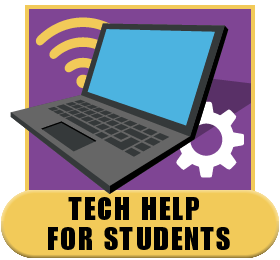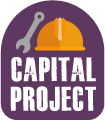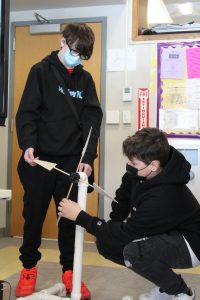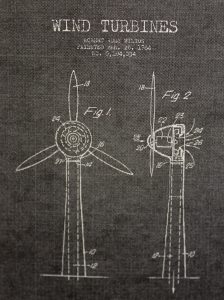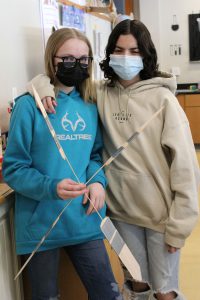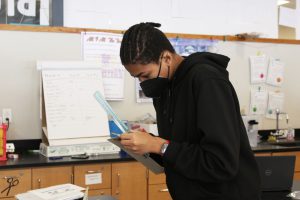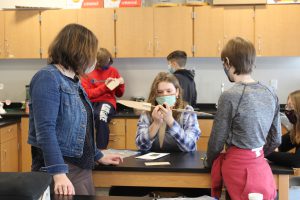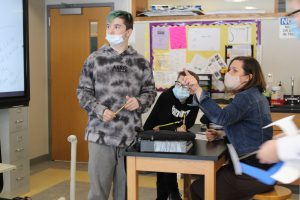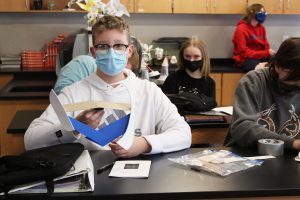Johnstown’s junior high science students gain valuable hands-on experience in the classroom
Two grants totaling almost $8,500 enabled science teachers to purchase supplies for STEM-based enrichment
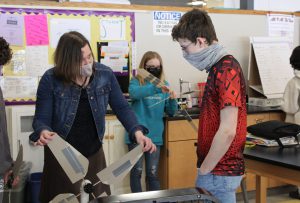
Johnstown Junior High School science teacher and district science coordinator Heidi Bolebruch leads students through a Kids Wind project, requiring them to design, build, and test a wind turbine. Supplies for the project were purchased with grant money from the Bender Scientific Fund of the Community Foundation for the Greater Capital Region.
The Johnstown Junior High School science department received two separate grants totaling almost $8,500 which has enabled science teachers Heidi Bolebruch and Hanz Litz to give their seventh and eighth grade students more hands-on experience in the classroom this school year.
In collaboration with Capital Region BOCES’ grant writing service, Bolebruch was able to secure a $2,937 grant from Toshiba America Foundation for her “School of Fish” project, and Litz procured a $5,500 grant from Bender Scientific Fund of the Community Foundation for the Greater Capital Region, to be used for the Gearing Up Science Training (GUST) Project at Johnstown Jr-Sr High School.
The GUST project was deployed at Johnstown High School to improve student engagement with STEM topics through project-based lessons on renewable energy. With the initiative, students will explore different types of renewable energy by building, testing and experimenting with wind turbines, solar cars, solar boats and more. They will also learn how different climate and weather patterns across the globe affect the performance of renewable energy products and generate ideas on how they might combat a global climate crisis.
“This is so much more than just reading a chapter about a subject,” Bolebruch, who also serves as the district’s science coordinator, said. “This allows us to go outside of the one dimensional learning process and for students to see practical applications of science in everyday life. They’re not just learning about science – they’re experiencing it.”
Through the School of Fish project, Bolebruch explained that students in seventh and eighth grades will participate in project-based learning activities centered around raising trout from eggs. Along the way, they will study fish life cycles and stream habitats, learn to appreciate water resources, foster conservation ethics and increase their knowledge of ecosystems. In the classroom, students will be responsible for monitoring the water quality of the fish, as well as feeding and caring for them.
The School of Fish initiative will also feature community involvement, including classroom guest speakers from organizations like the New York State Department of Conservation (DEC) and scientists from local colleges or businesses. A field trip to release the fish at the DEC’s Hale Creek Field Station will also be part of the program.
“These fish will be hatched in the classroom, be nurtured in classroom fish tanks and eventually be released right here in the Johnstown area,” Bolebruch said. “This kind of real-life science application has the potential to open a students’ eyes to potential career paths that they might not ever have thought of — Environmental Conservation Police Officer, climate scientist, marine biologist, fish hatchery manager or even a park ranger,” she added.
Johnstown Junior-Senior High School Principal Scott Hale commended Bolebruch and Litz’s creativity in bringing science to life for their students. “Mrs. Bolebruch and Mr. Litz really went the extra mile to find ways to incorporate more dynamic hands-on lessons in their classrooms to keep students engaged,” he said. “Project-based learning and extending learning opportunities beyond the classroom walls is vital, as our students start to explore various career paths and prepare for life after high school,” he added.

